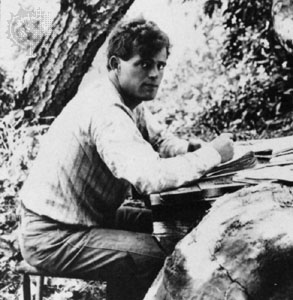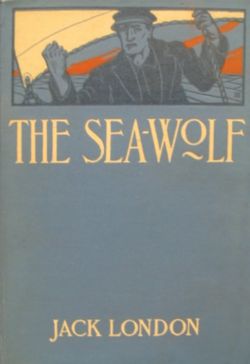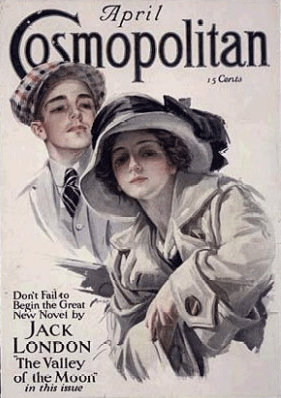
Jack London (1876-1916), American novelist, socialist, and adverturer; in turn an oyster-pirate, hobo, sealer, goldminer, war correspondent, writer, alcoholic, and suicide, who cast himself in the role of rugged individualist and Nietzschean superman and whose life Hugh seems at times almost consiously to imitate. London's life and socialism was fraught with contradiction and he is at his best when depicting the ferocious individual struggle rather than the colelctive human dream. His best known works are The Call of the Wild (1903), The People of the Abyss (1903), White Fang (1906), Martin Eden (1909), as well as those which Hugh mentions (below).
Left: London writing The Sea-Wolf, 1904. Image courtesy Jack London State Historic Park.

There may be some parallels to the triangle presented in Under the Volcano in the contrast of the older and younger man; the younger man's supposed sensitivity; the contrast of contemplative and active personalities; and the desire for a chaste life on some northern island.
Left: The Sea-Wolf, first edition. Macmillan Company, 1904.

The novel appeared both in serial form, running in Cosmopolitan from April (pictured, left) through December, 1913, and in book form the same year.
The novel thus celebrates "man's unconquerable will," which even Standing's final death cannot denigrate, but it is also relevant to Hugh, who is very much the prisoner of his own weaknesses and seeks achievement elsewhere. The chief irony for Lowry, however, is the relevance of the title to the Consul's fate.
Left: The Star Rover, first edition. Macmillan Company, 1915.